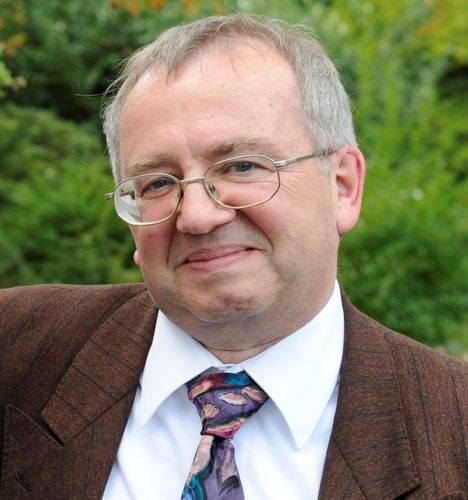Stefan Berger was born in Heidelberg in 1946. After studying chemistry at the University of Tübingen, he obtained his doctorate in 1973 under the supervision of Anton Rieker, with a thesis on the synthesis and carbon-13 nuclear magnetic resonance of oxepines. During a year and a half of postdoctoral research at John D. Roberts' laboratory in Pasadena, USA, he also met David M. Grant and learned a great deal about relaxation times. His postdoctoral work set the course for his research area: nuclear magnetic resonance spectroscopy (NMR) in organic chemistry. His habilitation (1981) on 13C,13C and 13C,15N spin-spin coupling constants paved the way for an assistant professorship at the University of Marburg in 1988, which eventually led to his appointment as a professor of structural analysis at the University of Leipzig in 1997.
Brilliant utilization of pulse techniques in NMR
Berger's entry into NMR spectroscopy began with his work in Tübingen on 13C resonance, made possible by the pulse Fourier transform spectroscopy developed by Richard Ernst. As a new tool, he utilized 13C spin-lattice relaxation time measurements in California, demonstrating their usefulness for molecular structure research in review articles published in Angewandte Chemie in 1975 and later in Advances in Physical Organic Chemistry in 1978. With advancements in measurement techniques, the spin-spin coupling between rare nuclei homo-nuclearly (13C,13C) or hetero-nuclearly (13C,15N) and the influence of deuterium on the chemical shift of other nuclei emerged as a new source of information for the structural elucidation of organic molecules. Berger brilliantly exploited the possibilities of pulse techniques to develop new experiments or improve existing techniques. He quickly embraced new developments in measurement methods, such as the determination of dipolar residual couplings in liquid crystals or diffusion-controlled NMR spectroscopy, and demonstrated their application potential in organic and organometallic structural chemistry. The large number of co-authors he collaborated with attests to his innovative application of the NMR experiments available today. His later-developed interest in biological problems and his investigations of well-known pharmaceuticals and natural products, mostly published in Chemistry - A European Journal since 2013, demonstrated that he looked beyond the scope of organic NMR spectroscopy. Berger was one of the great teachers of NMR. His books are international bestsellers. His first work, co-authored with Siegmar Braun and Hans-Otto Kalinowski and published in 1984, on 13C NMR spectroscopy is already a classic. "NMR Spectroscopy of Nonmetals" followed in the early 1990s in four volumes, both works were quickly translated into English as well. Together with the co-authors of the 13C volume, he subsequently produced an indispensable compendium of NMR experiments for practitioners, describing 200 techniques and even receiving a translation into Chinese. For the work dedicated to natural products, "Classics in Spectroscopy" (together with Dieter Sicker), Berger was awarded the book prize offered by the Foundation of the Chemical Industry in 2009. His expertise was highly regarded in invitations for lectures and guest professorships, both nationally and internationally, including Spain, Japan, Australia, and South Africa. He was also valued for his contributions to the continuing education program of the German Chemical Society (GDCh). In 1997, he initiated the NMR Monday Afternoon at the Leipzig Institute, which became a regular event known as the Central German Resonance Meeting (MDR) and celebrated its 50th edition in November 2022.
Direct, amiable, and dedicated
His colleagues appreciated his honest and often very direct manner, which was softened by humor and, above all, self-irony. Criticism did not come as an accusation but with a mischievous smile. He was highly engaged in academic teaching. The close interaction between organic chemistry labs and NMR education was of particular concern to him. He supervised dozens of theses and dissertations, and often the contact extended far beyond graduation. Modest and forward-looking, he was perceived as an active, supportive individual with an open ear: a true scientist, teacher, and human being. We will greatly miss him.
The article was published in: Nachrichten aus der Chemie
Obituary
In Memoriam: Prof. Dr. Stefan Berger
https://www.chemie.uni-leipzig.de/en/newsdetail-1/artikel/in-memoriam-prof-dr-stefan-berger-2023-06-09
The Institute of Analytical Chemistry mourns the loss of Prof. Dr. Stefan Berger, retired professor of structural analysis, who passed away on April 2, 2023, after a long and severe illness. Stefan Berger was one of the great teachers of nuclear magnetic resonance spectroscopy (NMR), and many of his works have become classics.
Created by: Stefan Berger was born in Heidelberg in 1946. After studying chemistry at the University of Tübingen, he obtained his doctorate in 1973 under the supervision of Anton Rieker, with a thesis on the synthesis and carbon-13 nuclear magnetic resonance of oxe
